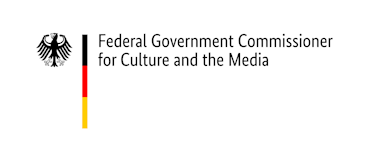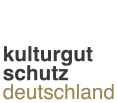Restitution of property looted by the National Socialists to its owners abroad
Since the entry into force of the German Act on the Protection of Cultural Property (Kulturgutschutzgesetz, KGSG), a number of different museums have queried which export regulations should apply to the restitution of cultural property removed as a result of persecution by the National Socialists to its owners abroad. “Restitution” within this sense of the term is deemed to take place if, on the basis of the 1998 Washington Principles and the 1999 Common Statement by the Federal Government, the Länder and the National Associations of Local Authorities (available in German) following clarification of the cultural object’s provenance, an object removed as a result of persecution by the National Socialists between 30 January 1933 and 8 May 1945 is returned to the original owners living outside Germany or their heirs living outside Germany.
Restitution of cultural property from museums funded under public law or from museums financed predominantly through government grants
In cases where a museum’s collections are covered by the general protection granted pursuant to Section 6 (1) (2) or (3) KGSG and thus qualify as “national cultural property”, the following procedure is recommended for the restitution of cultural property to other countries. The object earmarked for restitution is withdrawn from the museum’s collections, since it will no longer belong to these collections on a permanent basis. This withdrawal is carried out in line with the museum’s own by-laws or general principles, for example the Code of Ethics for Museums of the International Council of Museums (ICOM) or the Guidelines for the Documentation of Museum Objects (available in German) of the German Museums Association (Deutscher Museumsbund). As soon as the cultural object has been withdrawn from the museum’s collections, it is no longer eligible for the general protection conferred upon cultural property by Section 6 KGSG, and should therefore be treated in the same way as any other cultural property. In line with the generally established standard procedure, the obligation to obtain an export licence will depend on the age and value thresholds that apply in respect of exports to the country of destination:
- the age and value thresholds pursuant to Section 24 (2) KGSG apply to exports to an EU Member State;
- the age and value thresholds set out in the directly applicable Regulation (EC) No 116/2009 are relevant for exports to third countries outside the EU.
The relevant categories and the associated age and value threshold are illustrated in an overview.
If the age and value of the cultural object do not exceed the relevant thresholds, the cultural object subject to restitution can be exported without any licence. If a licence is required, it will typically be issued by the competent Land authority without further checks if the cultural object in question was removed as a result of persecution by the National Socialists and the export is aimed at its restitution to another country. There is no possibility of such a cultural object being entered into the directory of nationally valuable cultural property of the Land in question, since any such entry would need to be deleted immediately pursuant to Section 13 (1) and (2) KGSG.
As a basic principle, however, the museum can also apply to the Federal Government Commissioner for Culture and the Media for an export licence pursuant to Section 23 KGSG; any such licence must then be issued pursuant to Section 23 (3) KGSG. The age and value thresholds are irrelevant in respect of this procedure for the permanent export of national cultural property, and the general protection conferred by Section 6 (1) ceases to apply as soon as the licence is issued. The object must nevertheless be withdrawn from the museum’s collections, meaning that preference should ultimately be given to the procedure described above (standard procedure).
Restitution of cultural property from privately owned museums
Special arrangements apply in connection with museums that are not public-law institutions and are not funded predominantly through government grants, since the collections of these museums are not eligible for protection as national cultural property pursuant to Section 6 (1) (2) and (3) KGSG. According to the general principles enshrined in the Act (Section 2 (2) and Section 23 (3) KGSG), the restitution of cultural objects that were removed as a result of persecution by the National Socialists qualifies as an export that requires a licence if the age and value thresholds are exceeded (see above).

